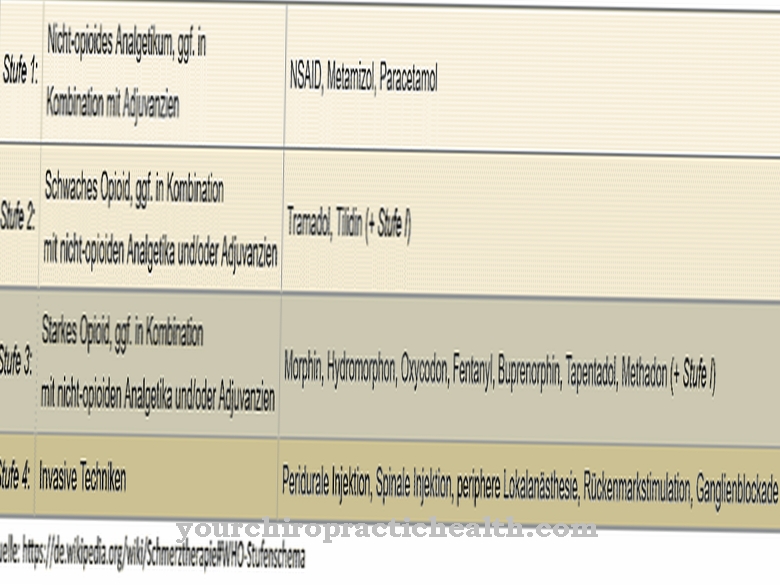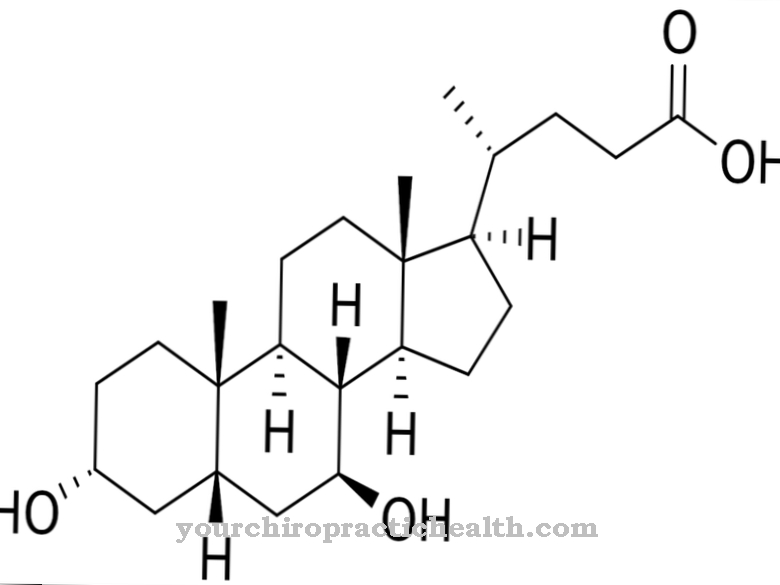At Meropenem it is an antibiotic that belongs to the group of carbapenems. The drug is primarily used in the treatment of bacterial infections. Among other things, the fact that meropenem is effective against both gram-negative and gram-positive germs and bacteria is used. In the vast majority of cases, the drug is administered by intravenous injection.
What is Meropenem?

The drug Meropenem is one of the so-called carbapenems. This group of active ingredients also includes drugs such as cephalosporins, penicillins and monobactams. These substances are beta-lactam antibiotics. Of all beta-lactam antibiotics, the carbapenems have the largest spectrum of activity.
In addition, these substances also have the strongest broad spectrum effect with regard to bacterially caused infectious diseases. The only exceptions to this are Enterococcus faecium and methicillin-resistant Stenotrophomonas maltophilia and staphylococci, which in many cases cause serious infections.
The active ingredient meropenem is used in combination with the drug imipenem or cilastatin in antibacterial chemotherapy. Here it is the second carbapenem derivative that is used for this purpose.
Basically, Meropenem is a derivative of the substance thienamycin, which makes it similar to Imipenem. However, this has not been developed sufficiently to be marketed in the pharmacological market.
The shelf life of the active ingredient in a solution depends primarily on the solvent and also varies depending on the room temperature. The shelf life is between two and eight hours if it is dissolved in a ten percent glucose solution. In pharmacological use, meropenem occurs as a trihydrate. It is a whitish to yellowish powder with a crystalline appearance. The substance is practically insoluble in water.
Pharmacological effect
The mechanism of action of the drug meropenem has largely been clarified. The substance works similarly to other beta-lactam antibiotics in that the synthesis of bacterial cell walls is restricted. This gives the drug a bactericidal effect. With regard to Listeria monocytogenes, meropenem has a primarily bacteriostatic effect.
In principle, the active ingredient shows a high stability towards beta-lactamases of a bacterial type. The bactericidal effects of meropenem are primarily due to the impairment of the synthesis of cell walls. As a broad spectrum antibiotic, Meropenem is characterized by a wide spectrum of activity. In some cases, it's even called an ultra-broadband spectrum antibiotic.
Meropenem works against anaerobic and aerobic as well as gram-positive and gram-negative germs. The spectrum of activity of meropenem shows similarities to that of imipenem. However, Meropenem is more effective against enterobacteria, whereas it is less effective against gram-positive germs.
Resistance to meropenem is possible in some cases and can develop in different ways. For example, the proteins in the germs that bind penicillin can change. This occurs, for example, with certain bacterial strains from the Enterococcus faecium group. Corresponding mechanisms are particularly evident in gram-negative pathogens such as Pseudomonas strains. As a result, the bacterial cell membrane is affected. The antibiotic is no longer able to accumulate sufficiently in the germ.
The drug is primarily excreted renally. The concentration within the CSF is relatively low, but in the case of meningitis it is greatly increased. The half-life of the active ingredient is around one hour.
Medical application & use
Meropenem is a so-called reserve antibiotic. It is therefore used to treat life-threatening infectious diseases and mixed infections caused by Meropenem-sensitive germs.
Possible areas of application are, for example, serious infections of the respiratory and urinary tract. Meropenem can also be used in the context of sepsis. The drug is approved for the treatment of serious infections in adults and children older than three months. For this reason, the possible field of application of meropenem extends from nosocomial pneumonia, meningitis and intra-abdominal infectious diseases to serious gynecological infections.
Meropenem can also be used in the treatment of infections of the kidneys and the lower urinary tract, the soft tissues and the skin. The drug can also be used in cystic fibrosis and episodes of fever in neutropenic adults if there is a suspicion of bacterial pathogens.
Since meropenem is mostly stable against the so-called renal dehydropeptidase I, it does not have to be taken in combination with an inhibiting agent of the corresponding enzyme, such as cilastatin. The active ingredient meropenem is available in the form of a powder that is used to produce injection and infusion solutions.
Risks & side effects
In principle, the possible undesirable side effects of the drug meropenem are similar to those of other beta-lactam antibiotics, especially those of the active ingredient imipenem. There is a particular difference here with regard to the greatly reduced neurotoxicity.
Common side effects include, in particular, local skin reactions at the site of the injection, such as pain or inflammation, itching, or a rash. In addition, headaches and nausea, diarrhea and vomiting are possible. Thrombocythemia sometimes occurs. In some cases, epileptic fits have occurred after taking meropenem.



























